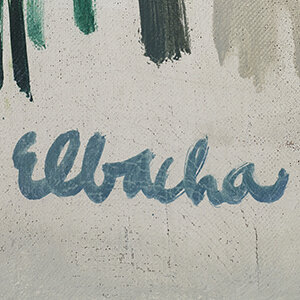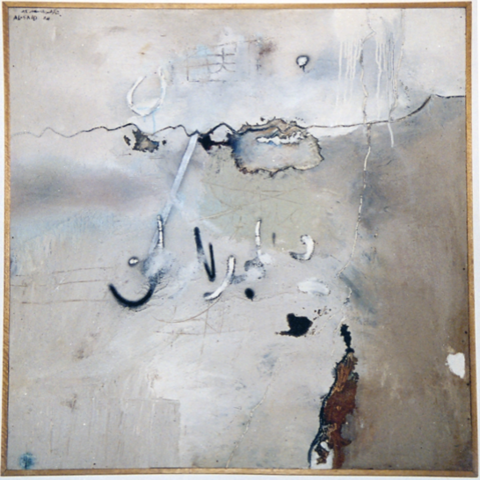


Last updated on Tue 16 May, 2000


Journey through the Contemporary Arts of the Arab World
MESOPOTAMIA/IRAQ
Darat Al Funun
May 16 –July 6 2000
"Art in the Mesopotamia has always been like its people, who have been the product of the land and climate. They have never reached decadence and never achieved perfection: for them perfection of craftsmanship has been a limitation on their self-expression. Their work has been crude inventive, has had a vigor and boldness which would not have been possible with a more refined technique. The artist has always been free to express himself, even amid the state of Assyrian, where the true artist speaks through the drama of the wounded beast." Jawad Salim, Founder of The Baghdad Modern Art Group, 1951
"There were in the fifties three major groups, each led by a prominent painter, which embodied this struggle for the recognition of the artist and his view of the world: the S.P. (Society Primitive), led by Fayek Hassan, the Baghdad Modern Art group, led by Jawad Salim, and the Impressionists (made up largely of post-impressionists and cubists), led by Hafidh Droubi. These groups have remained fairly active until recent years, comprising in all about fifty painters and sculptors. As more and more artists returned from their studies abroad (in London, Paris, Rome, Warsaw, Zagreb, even Peking) or graduated from Baghdad's own Fine Arts Institute and Fine Arts Academy (the later being part of Baghdad University), groups in the sixties tended to multiply or splinter off, with many artists, of course, preserving their independence. There where the Academicians, the Innovationists, the New Vision Group, the One Dimensionists and others. Each group prided itself on being revolutionary and after its own fashion, ranging in its creed from the intensely political to the intensely religious or mystic. Actually the ideological lines, political or otherwise, often cut across the groups formations in a remarkable way. What mattered in the final analysis was individual talent: the brilliant creators where of there own making each group contributed its valuable share the general discussion and examination of ideas, just as it also made exhibitions easier to hold for the artists themselves.
One fact that has always to be recognized in understanding Arab art today is that however revolutionary Arab artists maybe in concept and in aspiration, a spirit of tradition hang on to them which they cannot, will not shake off. However much they may subscribe to the view of "internationalism" or "cosmopolitanism" in modern art, they will not give up the notion that their identity can only be shaped by rooting themselves in a tradition of their own, which helps to give a distinction to their work, marking them of as the creators and extenders of a national culture. Iraqi artist, most of whom have a very good knowledge of other nation's art history, have right from the start attempted to bring into existence a view of art which might be called Iraqi, or Arab. Hence they are harking back to Sumerian and Assyrian sculpture, to Arab painting, manuscript illumination and calligraphy, to folk motives found in handicrafts and hand woven rugs and to local popular teams. Their achievement in style is the child of this wedding of tradition to present day contemporaneity. It is only thus that we may begin to understand the works of Jawad Salim, Shaker Hassan, Kathem Haidar, Dhia Azzawi, Mohammed Ghani, Khaled Rahal, Suad Attar, and many other leading artists. Whatever originality they may possess is thus connected, in one way or another, with the grass rootes of their society, even though the connection may not always be readily visible.
Similarily, most Iraqi artists are deeply concerned with the dilemmas of twentieth century men and their own relevance to their times. They consider their work basically as part of the struggle of an Arab nation emerging as a new force in today's world. Much of their symbolism derives its inspiration from the fight for freedom and independance of Palestinian revolutionaries. However personal the vision or the ultimate style, these are some of the major factors that make up their work." Excerpt from "The Grass Roots of Iraqi Art", Jabra Ibrahim Jabra, Palestinian writer and art critic
With works by Shaker Hassan Al Said, Ismail Fattah, Saadi Kaabi, Mohammad Mohreddin, Dia Azzawi, Rafa' al Nasiri, Salem al Dabbagh, Nuha al Radi, Ali Taleb, Himat Mohamad Ali, Karim Rassan Mansour, Mahmoud Obaidi, Nadim Muhsin, Halim Mahdi Hadi and Samer Usama.
Join us in our endless discovery of modern and contemporary Arab art